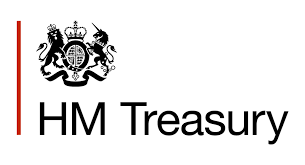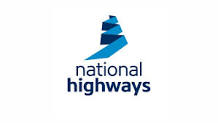HISTORIC PRESS RELEASE : Treasury agrees to allow fines, levies and fees to be used to finance specific projects [December 1998]
The press release issued by HM Treasury on 9 December 1998.
The first schemes in which receipts from fines, levies and fees can be used to fund specific projects were announced today by Chief Secretary, Stephen Byers. The detailed criteria against which applications to retain receipts from specific activities will be assessed were also set out. This new flexibility will allow government departments and agencies to retain money raised from fines and levies in cases where this would encourage the development of new initiatives, more efficient use of public money and better services.
Explaining this new policy Mr Byers,said:
“The Treasury is determined to provide a flexible and effective framework within which controls on public money will work. Where appropriate, and providing they meet strict criteria, I believe it is now right to consider how bodies can in future meet the costs of their activities from the money they raise from fines, levies and fees.
“The criteria will ensure that the money raised is in each case appropriate for such treatment, in particular, that the money is spent where it is most needed and will not distort the operational priorities of the organisations concerned.”
Separate criteria are applied to fines/penalties and licences/levies, reflecting the different considerations that apply. For example, money raised from fines and penalties will only be allowed to meet costs where: this is likely to improve performance against policy objectives; enforcement costs can be readily identified and apportioned; and where arrangements are in place to prevent any possible abuse of the system through the use of fine and penalty collection as a method of revenue raising.
The criteria applying to licences and levies require, for example: that the service provided is closely linked to the payer of the fee; that the activity must further the government’s economic goals; and that efficiency regimes are in place to keep costs down.
A full list of the criteria used is set out below.
Activities where using receipts to meet costs has been approved include:
DVLA receipts from wheel clamping activities; fees charged for removing wheel clamps from illegally parked cars and proceeds from the sale of unclaimed cars removed from the roadside will meet the costs of wheel clamping teams and the pounds where cars are held.
Office of Rail Regulation licence fees; the costs of the rail regulator will be met from licence fees charged to rail operators.
Environment Agency charges on waste packaging producers; waste packaging producers must register with the Environment Agency, which then monitors their activities. The costs to the Environment Agency can be met through registration fees.
For the remaining applications, discussions are continuing with departments on whether and how each case could meet the criteria. These include:
a request that the agencies involved should be allowed to retain the money raised from speed camera fines to meet the associated costs;
Environment Agency fines for breaches of environmental regulations.
The Treasury would be happy to consider further detailed proposals from departments, set against the criteria, to use receipts to meet costs.
NOTES TO EDITORS
1. The Economic and Fiscal Strategy Report 1998 (June 1998, CM 3978) announced that departments were to be able to keep more of their receipts in order to improve efficiency and effectiveness.
2. Any questions relating to the specific activities for which receipts might offset costs should be addressed to the departments concerned.
3. The full list of criteria used for assessing proposals by departments to allow netting off of receipts from costs, within Departmental Expenditure Limits, is:
(I) CRITERIA TO BE APPLIED TO FINES AND PENALTIES
Will performance against policy objectives, e.g. crime fighting and prevention, be likely to be improved?
Are arrangements in place which will ensure that the activity will not lead to the abuse of fine and penalty collection as a method of revenue raising, and that operational priorities will remain undistorted?
Will revenues always be sufficient to meet future costs, with any excess revenues over costs being surrendered?
Can costs of enforcement be readily identified and apportioned without undue bureaucracy, and with interdepartmental and inter-agency agreement, where necessary?
Can savings be achieved through the change and are adequate efficiency regimes in place to control costs, including regular efficiency reviews?
(II) CRITERIA TO BE APPLIED TO LICENCES AND LEVIES
The service delivered should be closely linked to the payer of the licence or levy, either because they are the beneficiaries of the service, or because they are the cause of the expenditure being incurred;
The licence or levy is appropriate, i.e. applied in the economically most advantageous way in the circumstances;
Introducing the levy or licence should not materially restrict the Government’s fiscal policy;
The activity financed by the levy or licence must further our economic goals;
Netting off receipts would improve the efficiency with which resources are allocated eg because of a difficulty in otherwise matching resources to unpredictable changes in externally driven demand;
Where appropriate, charges should be set using the principles of the Fees and Charges Guide, and surpluses would have to be surrendered;
There should be adequate efficiency regimes in place to keep costs down, including stretching targets and regular efficiency reviews;
Day-to-day decisions on the level of charges and an efficient level of costs should be taken separately from the body raising the levy, to prevent abuse of its monopoly power. Normally this would be by the departmental minister. There will be periodic reviews, involving the Treasury, of the operation of the licences and levies, including whether they should exist at all, what scale of activity is appropriate, and the level of charges set.



